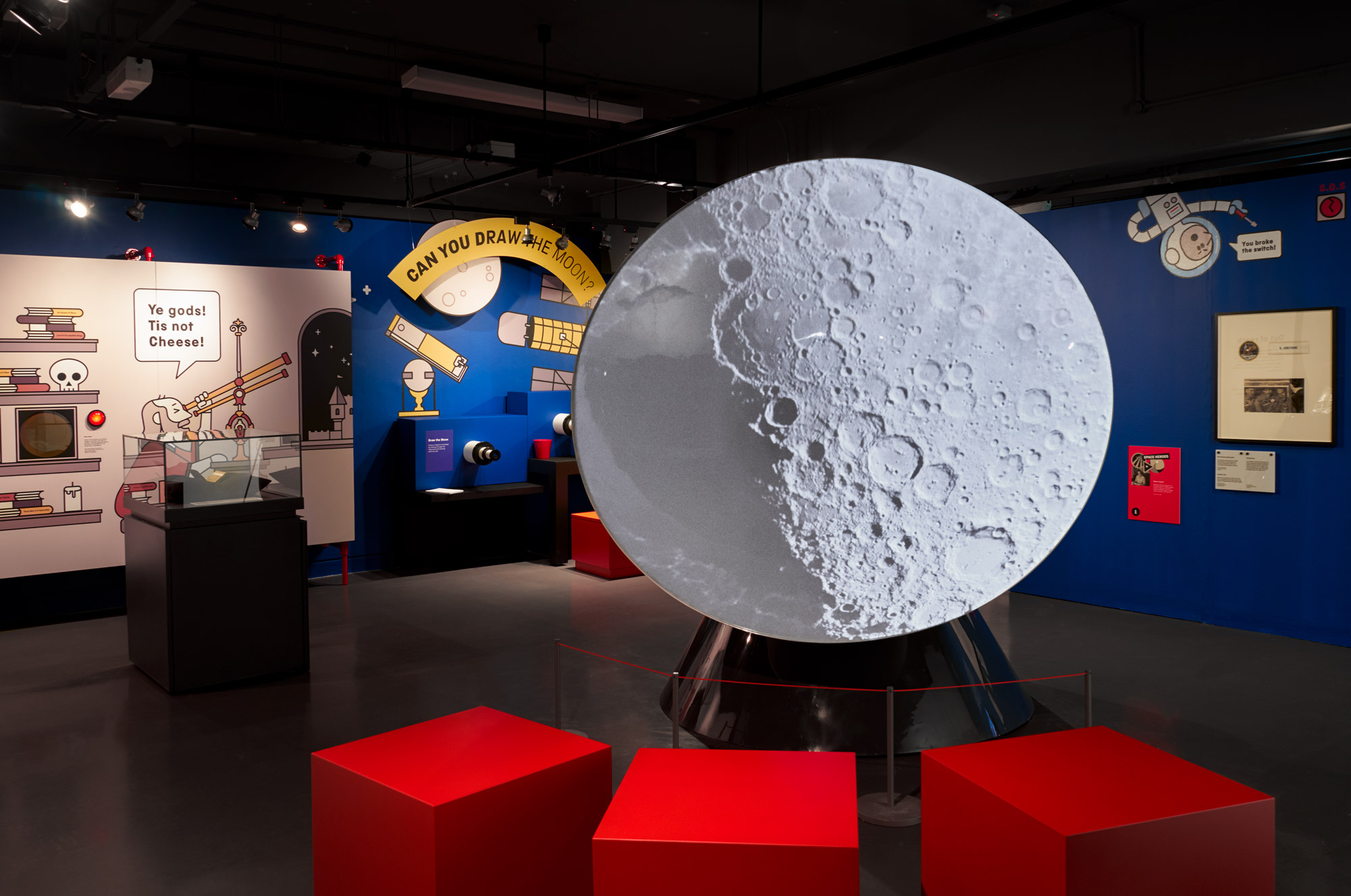Bringing the Apollo 11 moon landings to life through interactive displays
The National Science and Media Museum in Bradford is one of the leading learning spaces in the North of England. The museum, its exhibitions and programmes aim to inspire the next generation of thinkers, doers and makers. The museum explores the science and culture of image and sound technologies, helping visitors to understand the incredible impact they have on our lives.
The Challenge
To celebrate the Apollo 11 moon landings in a unique and memorable way, the museum tasked us with creating four installations which needed to meet the following criteria:
- Be robust, easily transported and with the ability to be fixed on-site. We wanted to ensure that our designs would easily transport from Liverpool and that when they arrived they would stand the test of time. The team at the museum were also keen to carry out repairs themselves to help keep the projects manageable.
- Be accessible to all types of people. Each of the installations would be used by lots of different people, including young people and people with disabilities or other mobility issues. It was key that everyone could interact with the installations and enjoy them equally.
- Be visually appealing with added ‘wow’ factor. When you visit a museum you want it to be a memorable experience! All of the installations needed to engage people from the moment they entered the space to when they got hands on and started learning.
- Adhere to safety regulations. To ensure the installations could be enjoyed by everyone, we needed to make sure the pieces met the museum’s high health and safety standards. All of our designs were created with safety and fun in mind.
Services
- Design
- Rapid prototyping
- 3D printing
The Project
To help bring the Apollo 11 moon landing to life, we created four installations that people would remember for years to come after visiting the museum.
Moon Exploration Through the Ages
We wanted to capture people’s imaginations and attention from the moment they walked through the door. To do that, we created ‘Moon Exploration Through the Ages’. At the entrance of the exhibit was a large, curved satellite dish with a looping projected film displayed on it. Projections of the moon and films about space played inside the curved interiors of the satellite. The projections filled the interior the satellite dish enabling people to see more, the more they moved around.
Behind the scenes: Projecting onto curved surfaces can be challenging! To help solve this issue we investigated if we would need to distort the outer area of the footage to counteract the curvature of the dish and maintain a clear image.
Space Sounds
What sounds are there in space? To help convey this mind-boggling idea we created an installation of a large maze-puzzle where sound effects played at one end and corresponding images played at the other. The people interacting with the sounds which image the sound is connected to, then check their answers on the sheet at the side of the installation.
Behind the scenes: Creating puzzles at scale throws up unique challenges. When we were creating this installation we researched similar maze installations and the materials they used to see how we might bring our own to life.
Look and Draw
Capture the moon in your hands. When Galileo was capturing the first recordings of the moon he viewed it through a telescope and recorded what he saw. We wanted to recreate this magical moment for families through our installation Look and Draw. To achieve this we created a series of telescopes with a backlit image of the moon inside. Just below the telescopes sits a desk so visitors can look at the moon and draw it, just as Galileo did.
Behind the scenes: To make the installation feel as real as possible we scaled down the distance between the earth and the moon. That way, the size of the printed moon inside of the display box would be accurate to what would be seen if a real telescope was to be used to look at the night sky.
Mooncast
How do we explain to children how the broadcast of the moon landing works? Mooncast is the answer. This installation saw users rotate a satellite dish to trigger an animation along a strip of LEDs (representing the signal route sent from the moon). The animation represents the signal route sent from the moon, which is then retransmitted through Australia, to the USA, up to a satellite in orbit and then broadcast ‘down’ to the person in the museum. Then something magical happens; the original moon landing broadcast appears on a television in the exhibit.
Behind the scenes: To create the trigger needed for the LED animation and video for Mooncast, we researched sensors that could act as a switch when rotated and aligned.
Some more interesting stuff
- Remote access control. What if our installations break when we’re all the way in Liverpool? To ensure minimal downtime, we built in remote access control alongside backup battery support and a watchdog. This enabled us to troubleshoot any problems from our desks with our favourite cup of coffee.
- Repurposing materials and placing them in a new context. Poly pipes, ducting, a Raspberry Pi and 3D printed caps were just some of the unexpected objects we used to bring the project to life. By being inventive sourcing our materials and giving them a new purpose we were able to keep the project on time and budget.
Read our in-depth ‘How we did it’ guide on how we achieved everything on this project.

